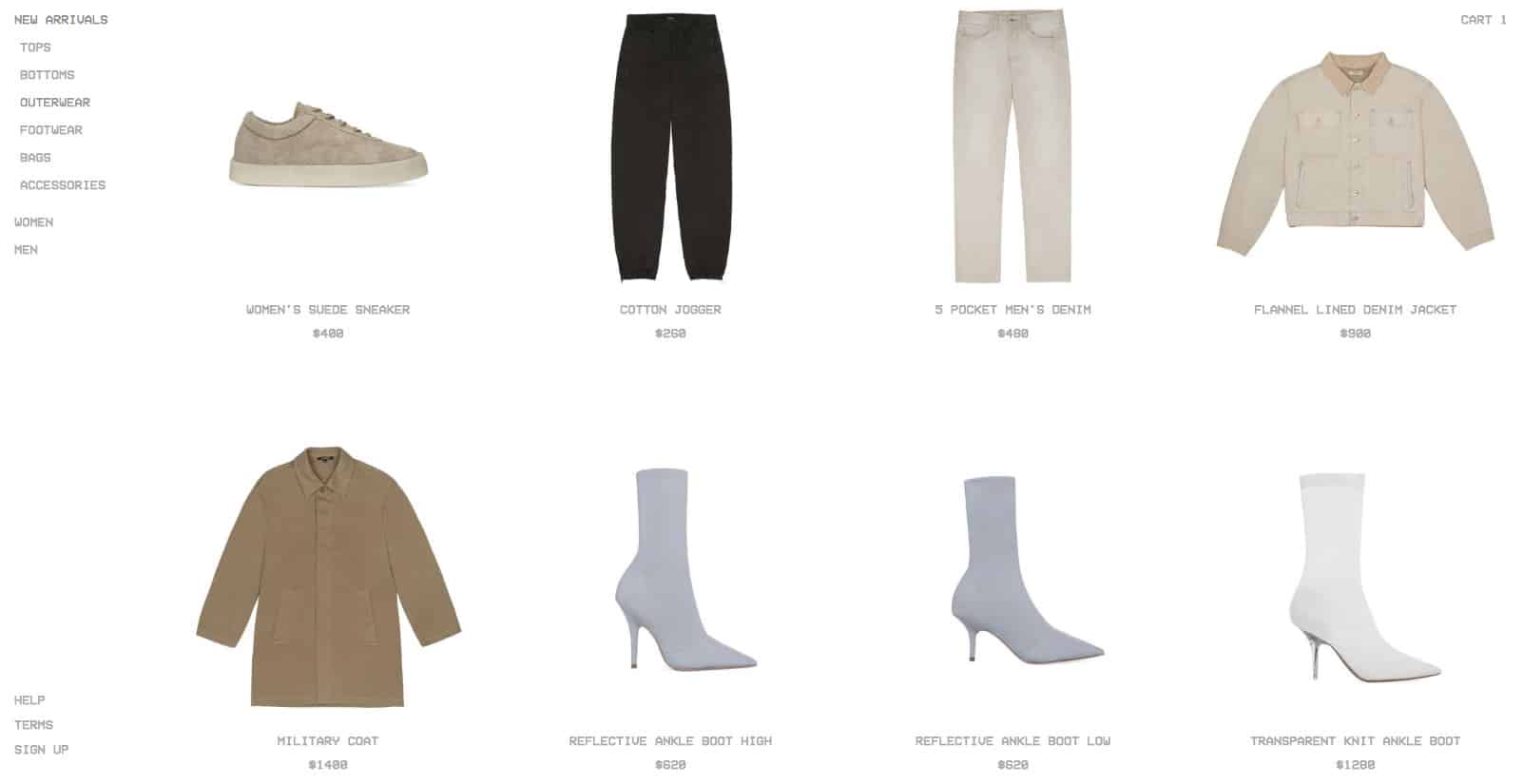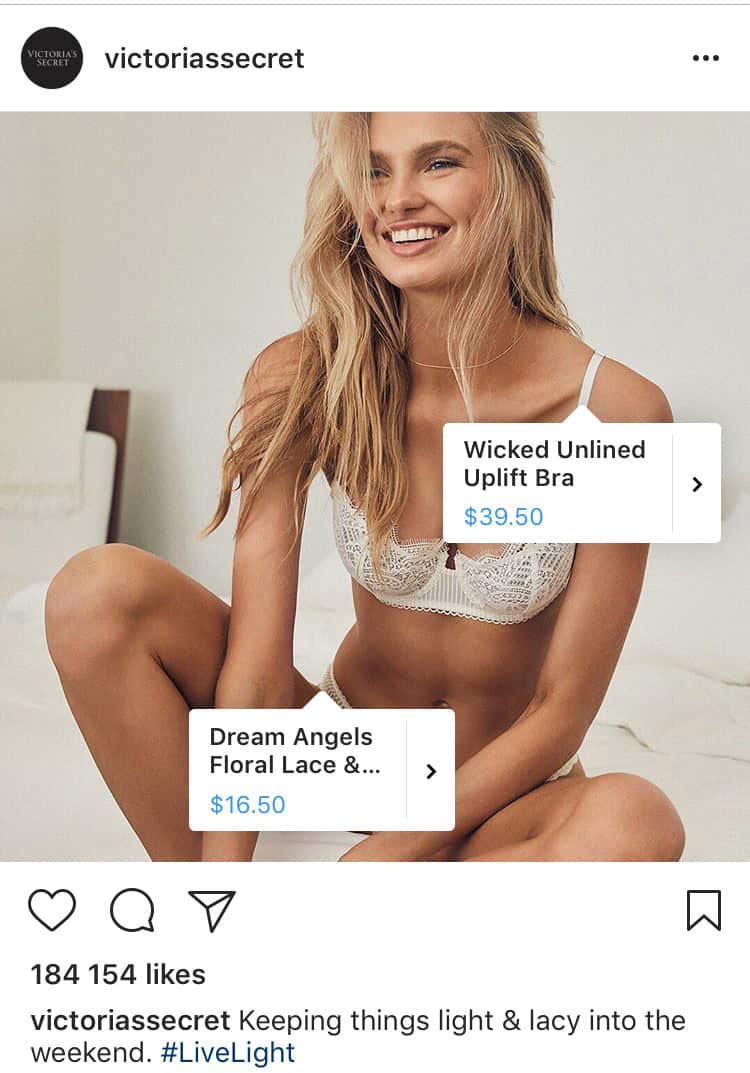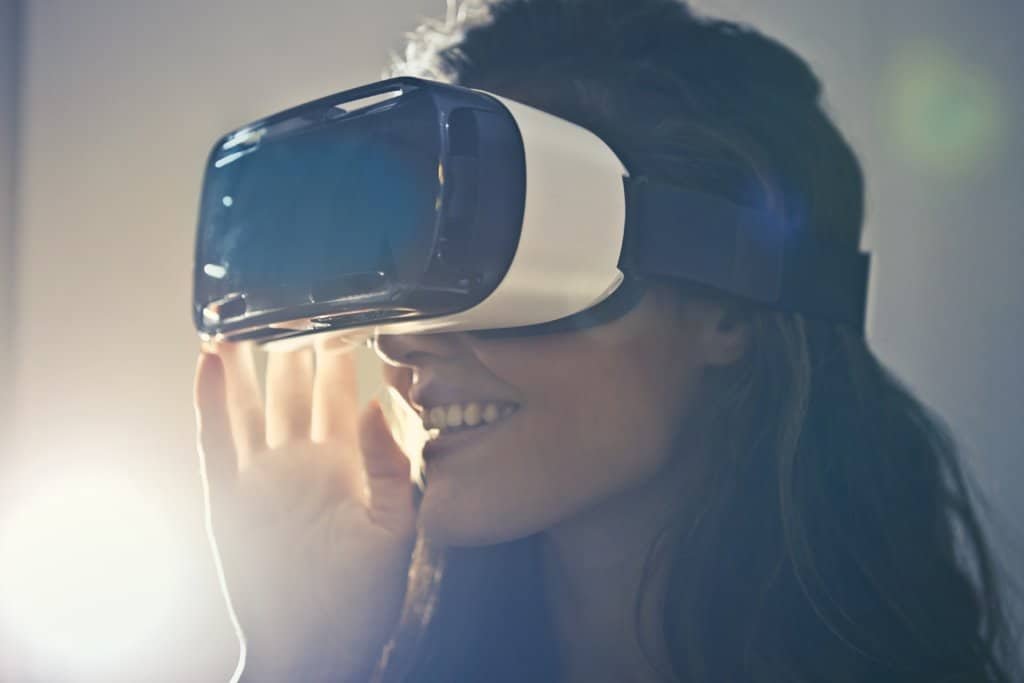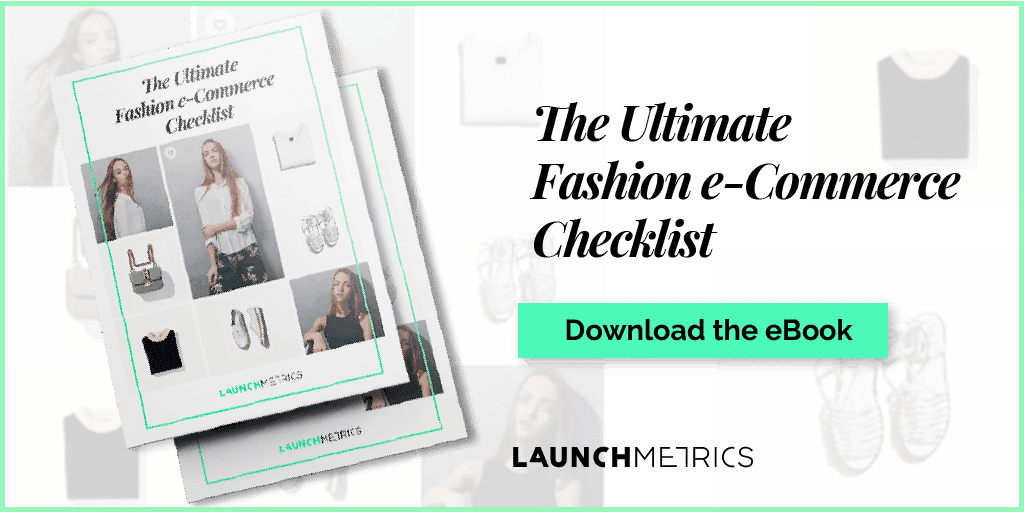What does the future of ecommerce hold? That’s the question brands need to be asking if they want to stay ahead of the game.
Because in the fight for survival, what matters is a brand’s ability to adapt. To embrace new trends and technologies and stay relevant to changing customer needs which we reviewed in our Ultimate Fashion Ecommerce Checklist.
For clothing and beauty brands this is truer than ever: fashion-related products remain the number one category for online sales worldwide, and the numbers continue to grow.
If you want to get ahead of the pack, join us as we take a look at five of the biggest trends that will shape the future of ecommerce in the next few years.
5 Trends that Will Shape the Future of Ecommerce
Augmented Reality (AR)
How will that dress look on me? Will that lipstick match my skin? Questions like these can be the final barrier between a customer and an online purchase. But imagine if you could give them a way to try out a product virtually.
Enter Augmented Reality, which has the power to create a new type of customer experience.
Fashion apps, like Gap’s Dressing Room app, allow users to interact with high resolution 3D products and see how they look from every angle, based on their body shape and size.
Meanwhile facial tracking — the same technology that gives you virtual flower crowns and puppy-dog ears in your Instagram stories — can be used to test out products like makeup and eyewear.
Cosmetics giant Sephora has been delving into AR for several years now. Their Virtual Artist app uses face-mapping technology to let users test out tens of thousands of products. Users can also go through beauty tutorials where each step is animated onto their own face.
These apps aren’t just great for the consumer: they’re also a data goldmine for brands. Smashbox Cosmetics’s AR app for trying on makeup, created in partnership with ModiFace, uses eye-tracking technology to determine which products and colors appeal to users the most, providing valuable insights into product trends.
AR technology is still relatively expensive and complex. But as 3D scanning and photogrammetry techniques evolve, modelling objects will become faster and cheaper. And 3D mapping of soft objects like fabrics will also become more sophisticated, leading to more realistic virtual clothing.
Voice search
Voice search started out as something of a novelty. You might ask Siri for the weather, or the meaning of life. Now, it’s serious business.
How serious? According to Comscore 50 percent of all searches will be voice searches by 2020.
As well as smartphones, voice assistants now live inside smart speakers (like the Amazon Echo and Google Home), TVs, smart watches, and fitness trackers. Amazon even has a voice-activated device for photographing and choosing your outfits.
Increasingly people are also using voice technology as a way to shop.
A 2017 study by Walker Sands found that nearly a quarter of consumers surveyed owned a voice-controlled device, with one in five people having used it to make a voice-driven purchase.
This presents new opportunities and challenges for ecommerce retailers. Search Engine Optimization (SEO) is already considered the holy grail of online success: now optimizing for voice search will become a key part of it.
That means things like anticipating natural-language questions and structuring web content accordingly. Or, for example, paying attention to longer tail keyword phrases in order to capture users at each stage of intent throughout their online shopping journey.
Personalization
One of the biggest challenges of retail ecommerce is how to create a personalized shopping experience in the absence of human contact. Product recommendations based on user preferences and past purchases have become the most typical way to do this. But looking ahead, expect new advances to change the game.
One example is personalizing product results based on a user’s measurements, as is the case with Rakuten’s Fits Me. The ecommerce solution allows customers to browse only items which fit their individual body shape, and shows them how each item will fit against their body.
This type of customization not only helps with conversion rate, it also reduces returns. According to Rakuten, retailer MUD Jeans has logged a 38.8 percent lower return rate from users who shop with the Fits Me system.
Simplified design
Not all trends of the future are about technological complexity. One growing trend in ecommerce has actually been about stripping it back; about creating something so ridiculously simple that it puts the product back at the heart of the experience, with no bells and whistles to distract the consumer from finding what they want. This trend has been dubbed brutalism (yes, after the architectural style) — a return to the less sophisticated designs of the early days of the web. Why is this trend important? Because design has a fundamental influence on how a brand is represented online, and in how a customer interacts with that brand. By rethinking how an ecommerce store looks and feels, new customer experiences can be created. The Yeezy website uses a brutalist style. You’re immediately met with a simple grid of products on a white background with minimal text in a primitive font. The purchase process is extremely simple, with no marketing copy or customer service suggestions.
 Photo Credit: yeezysupply.com
Photo Credit: yeezysupply.com
Despite being one of the most prestigious fashion houses in the market, Balenciaga’s website takes a similar brutalist approach. This aesthetic is reflected across the brand’s social media presence, creating cohesion and contributing to the brand’s edgy image.
The takeaway from this design trend is that it’s important for brands to understand their target market and use ecommerce design as a way to shape how a customer feels while making a purchase. Depending on your brand, that may mean creating something shiny and luxurious — or it may mean going in a whole other, completely unexpected, direction. As new design trends unfurl, keep a finger on the pulse and choose the ones that are right for you.
Social shopping
Shopping on social media exists now, but it’s far from ubiquitous. Social platforms are still working out the best and most profitable ways to integrate seamless purchasing. As this functionality evolves, social media will become even more relevant as a sales tool in the ecommerce market.
Pinterest’s Shop the Look feature lets customers easily identify shoppable items in photos and purchase them without ever leaving the app. Currently this functionality is limited to the US and to particular retailers, but it’s only a matter of time before it expands.
Instagram shopping is also set to take off in a huge way. With over 500 million daily active users, the platform has incredible potential for lucrative mobile commerce. And while “shop the feed” functionality has existed for a while in a limited way, it’s only in 2018 that shoppable posts have become available to businesses in 44 countries.
Victoria’s Secret is one brand capitalizing on social shopping, using shoppable Instagram posts to drive in-app sales from their 50+ million users.

Photo credit: Victoria’s Secret
Over the next few years, expect social shopping to become increasingly democratized. More brands will use platforms like Pinterest and Instagram to shift product, and more influencers — both macro and micro — will make their outfit photos directly shoppable by followers.
While brick and mortar stores are far from dead, ecommerce is growing at a rate that can’t be ignored. Nearly half of all Millennials, for example, would prefer to shop on their smartphones, tablets, or laptops than in-store.
That’s why the above ecommerce trends are best incorporated into an omnichannel retailing strategy. And these aren’t the only ones. From Conversion Rate Optimization to content marketing, we’ve covered more must-know pointers in our Ultimate Fashion e-Commerce Checklist, available for download at that link.


Aleksandra
Thank you for this wonderful article!
The e-commerce industry is the one that is continuously adapting. Over the next few years, we are to see even more trends arise, all of which will likely be designed at delivering a better user experience to customers.
Follow this article: https://mlsdev.com/blog/future-of-e-commerce-innovations-to-watch-out-for-new to find out more about the trends in the e-commerce industry.
Adriana
love this article,
Rosanna Ryan
Thank you Adriana, we’re delighted to know that!
Adrina winslet
Honestly, This post will obviously help a lot of people on what makes up good content and how to structure it for the best result. Interesting article and Amazing Instagram Trends Today and a great attempt for Instagram Marketing Trends. This Instagram Shopping Trend is particularly helpful for navigating people to the right place. You can read progressively about our inherent Instagram Marketing Tips includes here: https://medium.com/@adrinawinslet21/the-ultimate-guide-to-instagram-shopping-trends-834961e8bbb5
Thank you so much for Sharing an Informative Article!